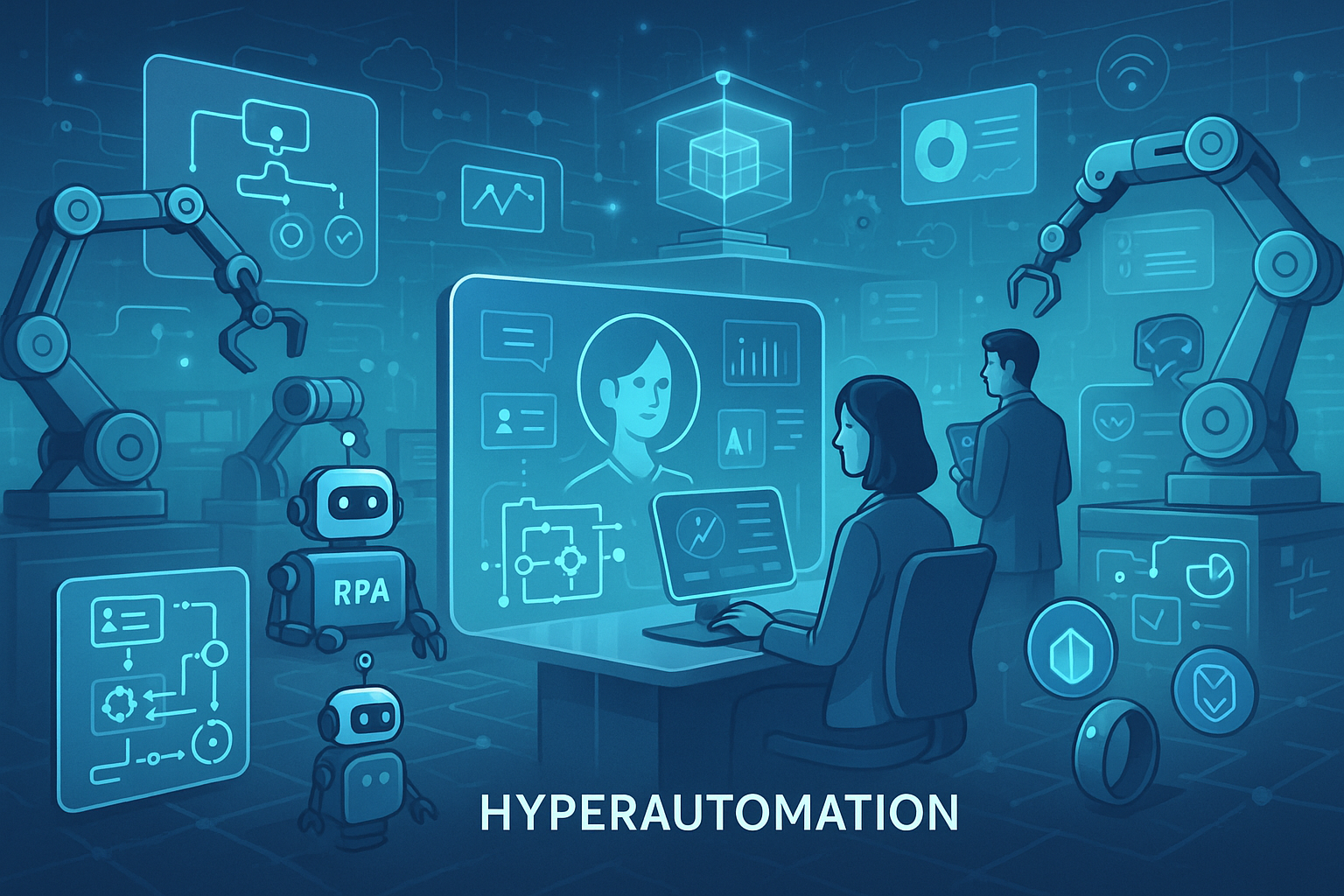Technology is moving forward at a rapid pace, and companies are searching for clever ways to stay ahead. Hyperautomation is a concept that’s catching a lot of eyes. But what’s the real meaning behind it, and why are numerous businesses putting their money into it?
Let’s simplify it and see how it’s changing the way companies operate.
What is Hyperautomation?
Hyperautomation is a fancy term for “automating everything possible using smart tech.” It’s not about using just one tool or script—it’s about linking several tools such as:
- Artificial Intelligence (AI)
- Robotic Process Automation (RPA)
- Machine Learning (ML)
- Low-code/No-code platforms
These tools collaborate to carry out tasks that require human input—quicker, with greater precision, and continuously.
Why Hyperautomation is Becoming More Popular
Companies today feel the need to reduce expenses, boost output, and **respond ** to shifts. Hyperautomation helps achieve all this by:
- Handling routine work
- Minimizing human mistakes
- Streamlining operations
- Freeing up staff to tackle more strategic jobs
put, it’s a potent method to enhance performance without exhausting your team.
The Tech That Powers Hyperautomation
Hyperautomation becomes possible when several technologies work together . Here’s a look at the main ones:
🔹 Robotic Process Automation (RPA)
RPA employs software “bots” to carry out repetitive tasks such as transferring data between systems or sending out emails.
🔹 Artificial Intelligence (AI)
AI enables systems to “think” and make decisions for complex tasks like examining customer behavior or forecasting trends.
🔹 Machine Learning (ML)
ML allows systems to improve from data and enhance their performance over time without 6666programming.
🔹 Low-Code/No-Code Tools
These tools enable anyone—regardless of technical skill—to build workflows and automations66666 using drag-and-drop interfaces.
How Hyperautomation is Used in Real Life
Hyperautomation isn’t just a fancy term—it’s already making a big difference for companies. Here are some examples:
- Banks apply it to speed up loan processing and spot fraud.
- Hospitals use it to book appointments and manage patient files.
- Retailers employ it to control stock and deliver custom offers.
- Manufacturers utilize it to monitor machines and forecast maintenance needs.
It’s in use across almost every sector to simplify tasks and cut down on time.
How Hyperautomation Helps Companies
Here are the main reasons businesses are adopting hyperautomation:
✅ Improved Productivity
Automating jobs means tasks finish faster, with less waiting.
✅ Reduced Expenses
Less manual labor = fewer hours = lower costs.
✅ Reduced Errors
Machines don’t get tired or lose focus so they make fewer mistakes.
✅ More Content Employees
Staff can devote their time to imaginative or tactical work rather than dull data input.
✅ Quicker Choices
AI helps businesses examine information and make intelligent decisions .
What Are the Obstacles?
no system is flawless. Some hurdles companies face with hyperautomation include:
- Initial setup expenses
- Merging with current systems
- Educating staff on new tools
- Keeping data safe
But with proper planning, companies can overcome most of these challenges.
The Path Forward: What’s Next for Hyperautomation?
Down the road most up-to-date businesses will make hyperautomation the norm. As the tech gets cheaper and simpler to handle even small firms will be able to automate more of their tasks.
Businesses that jump on the hyperautomation bandwagon now will gain an edge over their rivals—and be in a better spot to tackle whatever lies ahead.
